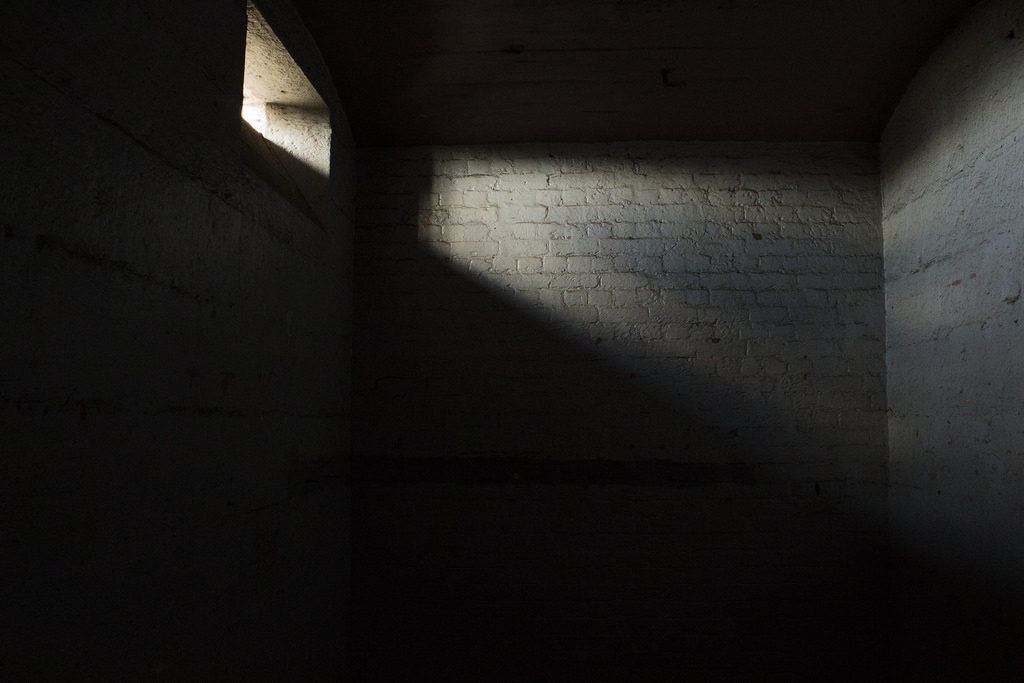UPDATE: CBC is reporting that Capay has been moved from his solitary confinement cell, where he has spent the last four years, to a different cell “with appropriate lighting and access to day rooms, spending time out of their cell for showers, phone calls and access to TV.”
Adam Capay, a young First Nations man, has spent four years in solitary confinement in a plexiglass cell where the lights are kept on 24 hours a day. He has not had a trial. He is now likely to be clinically insane. He has no idea whether it is day or night, his speech is slurred, and he has hallucinations.
Abu Ghraib? Nope. A so-called “correctional institution” right here in Ontario.
“How could this be?” asked Bob Rae in a Tweet. The answer to this is relatively simple, as it turns out.
Capay is one of possibly thousands of inmates held in solitary confinement in Canada for more than 15 days: the United Nations and international law have come to regard this as a form of torture, banned under an international convention to which Canada is a signatory. Between October and December of last year alone, 1,383 prisoners had spent longer than 15 days in solitary.
The reason we know about Capay at all is because a correctional officer gave the information to Renu Mandhane, the chief human rights commissioner in Ontario, who happened to be conducting a routine visit to the Thunder Bay jail. From time to time we do hear about these victims, usually when their situation is brought to light by third parties in individual cases.
There may be thousands like Adam Capay across the country. We have no easy way of knowing. Prison officials are, perhaps understandably, extremely secretive about the practice, and data is very hard to obtain. In Ontario, even finding out who’s actually running things is hidden behind a wall of official omertà.
Capay is not, in any case, unique. In Ottawa, an inmate at the Ottawa-Carleton Detention Centre, MutiurRehman, was literally driven mad after 18 months in solitary. Another, Yousef Mohammed Hussein, with no known mental problems when he entered the system, hanged himself after waiting nearly two years for a trial that was not scheduled for another year.
Ontario isn’t alone. Inmates in the Northwest Territories routinely spend months in solitary. There is no reason to believe that other parts of the country are any better.
We’re told it’s all due to lack of resources, and certainly that’s a factor, but it’s not a legitimate excuse. It’s moral idiocy to argue that we must torture our inmates because we don’t have the money to do otherwise.
Meanwhile, the Ontario Community Safety Minister, David Orazietti, having been apprised of the appalling Capay situation, refuses to lift a finger:
“I cannot commit to releasing any individual from segregation,” Mr. Orazietti said at Queen’s Park on Tuesday. “That is not a decision that politicians are making. That is a decision that is made by the individuals operating our jails. I will not take individual action on a specific circumstance.”…
Mr. Orazietti refused on Tuesday to order an end to long-term, indefinite solitary confinement in the province’s prisons.
“I can’t commit to that right now,” he said.
Mr. Orazietti is awaiting the results of a third-party review due next year. He ordered it earlier this month after a previous 19-month review. He said holding prisoners in segregation for years on end without trial “is not ideal,” but is sometimes necessary because of limits on space.
Hannah Arendt is the authority we must turn to when confronting this nauseating wad of Amtssprache. A man is being tortured virtually in front of us. But for an impromptu whistleblower, we wouldn’t have known anything about it, but we can’t pretend ignorance now. The official response from the top of the pyramid? “I cannot commit.” “Not my decision.” “The general situation is being reviewed — and reviewed.” “Not an ideal situation, but…”
Sure, it’s the system that is torturing Adam Capay and has already driven him to the brink of mental illness. But the system is made up of people, supposedly working within an accountability framework. Who’s in charge? The Minister? Hey, not me, says Orazietti, downloading responsibility to jail authorities — who have already been covering this up for years. Those jail authorities? Hey, they wish it weren’t so, really they do, but they don’t have the resources even to let Capay out in the prison yard for a while so he can tell night from day, and might even stop hearing voices. The legal system, which has kept this poor bastard on remand for four years? The same buck-passing, from everyone involved. Too bad, so sad.
The torture could end with the snap of Ministerial fingers. But Orazietti’s hands are tied, he says, it’s the system, see, he can’t take any action. He is reviewing the general situation, which has already been reviewed once for a period of 19 months. We should be reassured, and let the system work.
Want a definition of evil? We’re seeing it before our very eyes.
UPPERDATE: Adam Capay has been moved to a different cell, with “appropriate lighting” and access to day views. But as it turns out, this is merely because of construction in the area where he had been held.
Adam Capay, who has spent the last four years in segregation at the Thunder Bay District Jail, has been moved to a different cell, but jail officials say the move is only temporary.
According to Michael Lundy, a correctional officer at the Thunder Bay District Jail and president of OPSEU 737, Capay was moved to a new cell due to construction on the segregation unit at the District Jail.
“There is construction going on there right now,” he said. “They are modernizing our segregation unit. They are adding a solid door and better observation for officers.”
Please chip in to keep stories like these coming.
Image: Flickr/jmiller291




